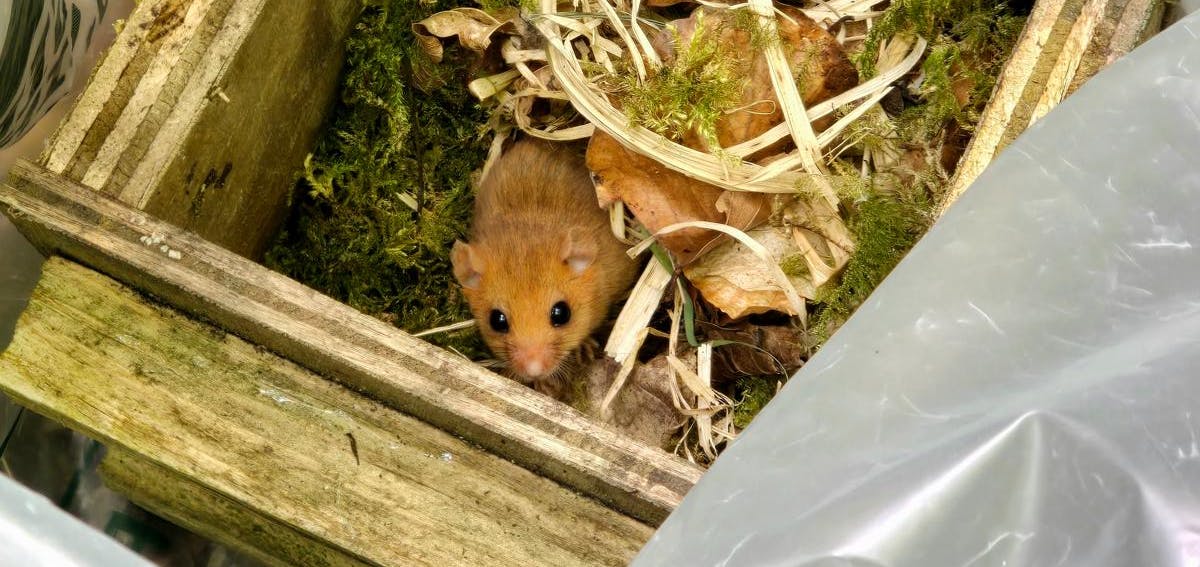
Dormouse Surveys
There is one species of native dormouse in the UK—the Hazel Dormouse (Muscardinus avellanarius). However, the European Edible Dormouse (Glis glis) was introduced to the UK in 1902 and is currently established in the Chilterns, with possible populations in the New Forest, Hampshire, Essex, and the Oxford area.
The Hazel Dormouse is protected under the European Protected Species under Annex IV of the European Habitats Directive and the Wildlife and Countryside Act 1981, which makes it an offence to:
- Deliberately capture, injure, or kill a dormouse.
- Deliberately disturb a dormouse in a way that is likely to impair its ability to survive, breed, or reproduce.
- Damage or destroy a resting or breeding place.
Dormice can be affected by works including:
- Developments that remove or impact woodland, scrub, or plantations.
- Developments that affect connectivity between woodland patches, scrub, by the removal of hedgerows and line of trees.
- Developments that impact rural gardens.
The best time of year to conduct surveys can be found in our ecology calendar.
If your Preliminary Ecological Appraisal has highlighted concerns about dormice within your site - you may need the surveys listed down below:
Adonis Blue will work with you to carry out the necessary surveys and obtain a dormouse mitigation licence for your site if required.
Call Adonis Blue on 01622 357 821 or email hello@adonisblue.org.uk to arrange a quote
Dormouse Surveys
If hazel dormice are known to occupy nearby or connected sites within 3km, and the habitat is suitable, it should be assumed that they are present.
A habitat quality assessment should be carried out prior to surveys starting. This assessment takes into account the structural complexity and diversity of plant species favored by dormice, and categories the habitat into one of four categories: excellent, good, fair, or poor.
Here are the main types of dormouse surveys used in development contexts:
Nest Tubes
- Purpose: To determine the presence or likely absence of hazel dormice.
- Method: Tubes should be in place at least one month before the first check begins.
- Good / Excellent habitat: At least 50 tubes should be installed along transects or grids, spaced 15–20 m apart, and covering a large proportion of the available habitat. The timing will depend on the start date of the first check. April, May, June, and July start dates are likely to finish in September, while August start dates will typically finish in October.
- Fair / Poor habitat: At least 100 tubes should be deployed for a full season (April–November), and at least 30 footprint tunnels should be deployed between May and October.
- Number of surveys: Tubes should be checked once per month.
Footprint Tunnels
- Purpose: To determine the presence or likely absence of hazel dormice.
- Method: A minimum of 50 footprint tunnels should be placed 15–20 m apart.
- Timing: Surveys may be carried out between April and November, but only data collected from May to October can be used when assessing survey effort.
- Number of Surveys: Two visits per month are required to replace the ink.
Opened hazel nuts
- Purpose: To determine the potential presence of dormice on site through the identification of characteristic feeding signs on hazel nuts. This method is only suitable where mature hazel scrub is present.
- Method: Conduct a ground search beneath mature hazel shrubs and collect a minimum of 100 hazel nuts that have been opened by small rodents (excluding those opened by squirrels). Dormice typically create a distinctive, neat circular hole with smooth, beveled edges around the opening. Collected nuts should be carefully examined to confirm the presence or absence of dormouse feeding signs.
- Timing: Surveys should be carried out in between September and February, when opened hazel nuts are most likely to be found.
- Number of Surveys: A minimum of one thorough survey is required. However, additional visits may be necessary on larger or more complex sites to ensure adequate coverage and to meet the minimum nut sample size.
Obtain a protected species license
To obtain a dormouse licence for development, you need to apply for a dormouse mitigation licence from the relevant statutory nature conservation body.
This licence is legally required if your development will disturb dormice or damage/destroy a known nest, even if dormice are not currently present at the time of the works.
Our team can help you secure a dormouse migration licence and ensure all necessary data is gathered, so it can be submitted as part of your planning application.